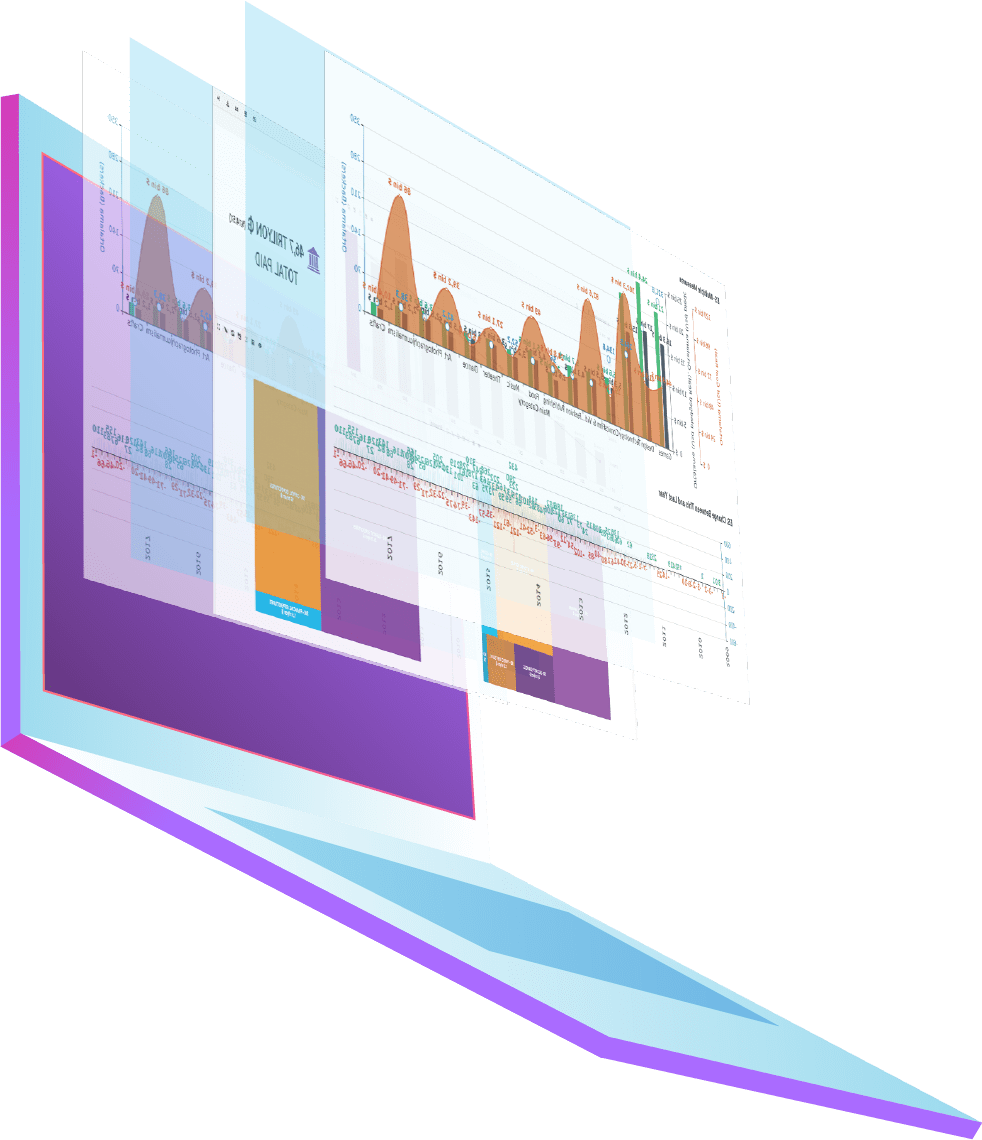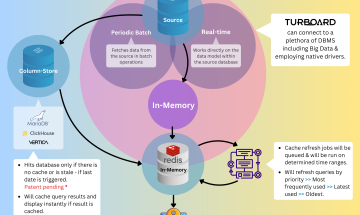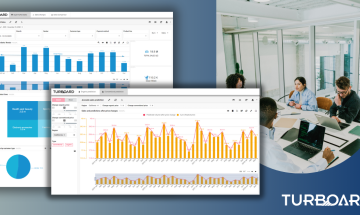
Businesses sometimes switch BI platforms for a variety of reasons. One possible reason is that they need to change because, for example, the company is consolidating its IT systems and wants to use a single, unified BI platform throughout the organization, or because the company was acquired and the new parent company already has a BI platform that they want to standardize on.
Investigating the reasons behind companies that opted to use a different BI platform out of personal preference is crucial.
We'll look at the reasons some of our current clients switched from SAP Crystal Reports to TURBOARD in this article.
Why do businesses look for an alternative to SAP Crystal Reports?
To outline the main challenges when using SAP Crystal Reports, we spoke to our current clients who used it as well as many other prospective clients who are Crystal Reports users.
The fact that Crystal Reports was created in the early 1980s (originally called "Quik Reports") and is a legacy product that underwent multiple name changes and acquisitions before being acquired by SAP in 2007 and rebranded as Crystal Reports in 2011 is a major factor in the challenges that Crystal Reports users face.
Here are the main challenges:
- Complexity and difficulty of use: SAP Crystal Reports has a steep learning curve and can be difficult for new users to navigate. Although Crystal Reports has added several new BI features, the look and feel are still that of a legacy software application and its users are looking for a better user experience.
- Limited functionality and no flexibility: while SAP Crystal Reports offers a wide range of features, some users may find that it does not have the specific functionality they need. While today's customers demand more self-service features and the ability to access data more dynamically, the program mainly offers users static reports for internal or external usage.
- Limited data connectivity: the software can be limited in its ability to connect to and integrate with other data sources. Although SAP Crystal Reports can connect to a variety of data sources, the list of supported data sources is not as extensive as other BI tools, and it may not include some newer or less common data sources. Data integration wise, SAP Crystal Reports does not have the same level of data integration capabilities as other BI tools and it is difficult to combine data from different sources or create cross-source reports.
- Limited support and development: as SAP Crystal Reports is an older software, the support and resources available for it are limited compared to more recent software options. It was last updated in 2020 and there haven't been any updates released since then.
- Cost: the software can be expensive depending on the version, the number of users, and the type of license purchased – perpetual or subscription license with annual maintenance fees included or excluded, etc. Additional costs may add up due to the need to hire specialized report designer(s), training the staff, support, and the need for customization at times. So overall, SAP Crystal Reports can be a costly option for some businesses.
- Data security issues: SAP Crystal Reports stores the data locally, so it may not have the same level of data security as cloud-based solutions. However, this can be considered an advantage in some cases, as some SAP Crystal Reports users have databases on private networks and do not want to move to a cloud-based platform.
- Struggle in large data handling: SAP Crystal Reports can struggle to handle large data sets, causing the software to slow down or crash.
- Limited compatibility: as it is an older software, it may not be compatible with all the latest operating systems, hardware, browsers, mobile devices and cloud technologies.
- Dependency on specialized report designers: only a specialized data analyst with a good understanding of the software’s capabilities, features, and limitations can prepare and design the required reports for the business using SAP Crystal Reports. This means that such businesses rely on a small number of individuals with the necessary skills and expertise to create and maintain reports as it is difficult for other users to create or modify them. This also leads to additional costs for hiring such individuals as we mentioned before.
- Cost and difficulty of upgrading older versions: upgrading to the latest version of SAP Crystal Reports can be costly, as it may require the purchase of new licenses and the cost of upgrading existing licenses. It can also be difficult , as it may require the installation of new software, reconfiguration of existing data connections, and the conversion of existing reports. Furthermore, some organizations choose to buy training for their staff to learn the new features and capabilities of the software, which can be an additional cost.
Why is TURBOARD the right alternative to Crystal Reports?
- Smooth user experience and ease of use: TURBOARD is a self-service BI and data analytics platform that focuses on increasing analytical literacy and democratization of data access and utilization while providing an enjoyable user experience for all business sectors and industries. So, it is designed in a way that any user, regardless of technical knowledge or programming experience, can fully utilize it. TURBOARD dashboards are remarkably interactive to allow end users to explore the data on a deeper level and make better, data-driven business decisions through various interactive features and dynamic tools.
- Flexibility, advanced analysis features, rich visualizations: In addition to a rich library (including 25+ chart types) for building flexible pixel-perfect visualizations, TURBOARD offers extended slicing and filtering, automated reporting and alarms, GIS visualizations and mapping options, cloning dashboards (patented), performance score cards and analytics features like predictive analytics, segmentation, what-if analysis, risk modeling, etc.
- Data integration: TURBOARD can connect to numerous data sources starting from files to databases and in a myriad of ways. It connects to a wide range of database engines such as MySQL, Oracle, PostgreSQL, SQLite, Impala (Cloudera), MSSQL, VERTICA, and Clickhouse, to name a few. It also allows cross-source analysis through connecting nodes together from different datasets and different data sources. Additionally, TURBOARD can connect directly to the data source to provide real-time analysis with instant reflection of changes.
- Professional and dedicated support: dedicated customer service and support is one of our top merits as for each project/client, a business intelligence developer, a data warehouse consultant, a project manager and a trainer are assigned to each client account. They are available to help the client right from the initiation of the project and through all its phases.
- Flexible pricing & reasonable costs: TURBOARD offers flexible and customized pricing packages that take into consideration both the needs and the budget of the client with no upfront payments, no additional or hidden fees, and where support services are always included in the package. Furthermore, we conduct a price/cost analysis in order to examine and assess if the proposed price is fair, reasonable and will not become a budget burden or a profit killer for the new client.
- Data security: TURBOARD mirrors the data source and creates queries when creating the visualizations and reports. The data is never copied from the database, but the query is sent to the real data even if the schema is imported. The platform can be installed on public or private cloud, it can also operate similarly on-premises for clients that prefer to store their sensitive data locally rather than in the cloud. Additionally, TURBOARD provides detailed and item-based authorization for its users, in addition to advanced authorization features, such as masking data, applying row and column based restrictions, receiving and syncing authorizations from other application databases, and flexible grouping options (on user and/or group levels).
- Competency in Big Data: TURBOARD is a robust and scalable platform that can be accessed by a large number of users and that can efficiently process massive and real-time data. TURBOARD, the business intelligence and data analytics platform of the big data ecosystem of the Turkish Ministry of Health, is used by more than 250 thousand licensed users with different authorization settings to monitor data over 200 TB in real time flowing from all public hospitals as well as many private hospitals.
- Compatibility: TURBOARD is compatible with the latest operating systems, hardware, browsers, mobile devices and different cloud technologies.
In 2022, WeCare tlc. has migrated from SAP Crystal Reports to TURBOARD as their selected BI platform. Jason Hall, the MIS Manager at WeCare tlc. says:
“TURBOARD was so easy to learn and implement, and the ongoing support is far better than any other vendor/partner we've ever worked with. Through our partnership with TURBOARD, we can quickly generate data visualizations on any source of data we have access to, allowing us to create reports in a matter of minutes that tell a complete story for our clients.”

To reveal striking insights hidden in your own data, discover 
Are you curious?





